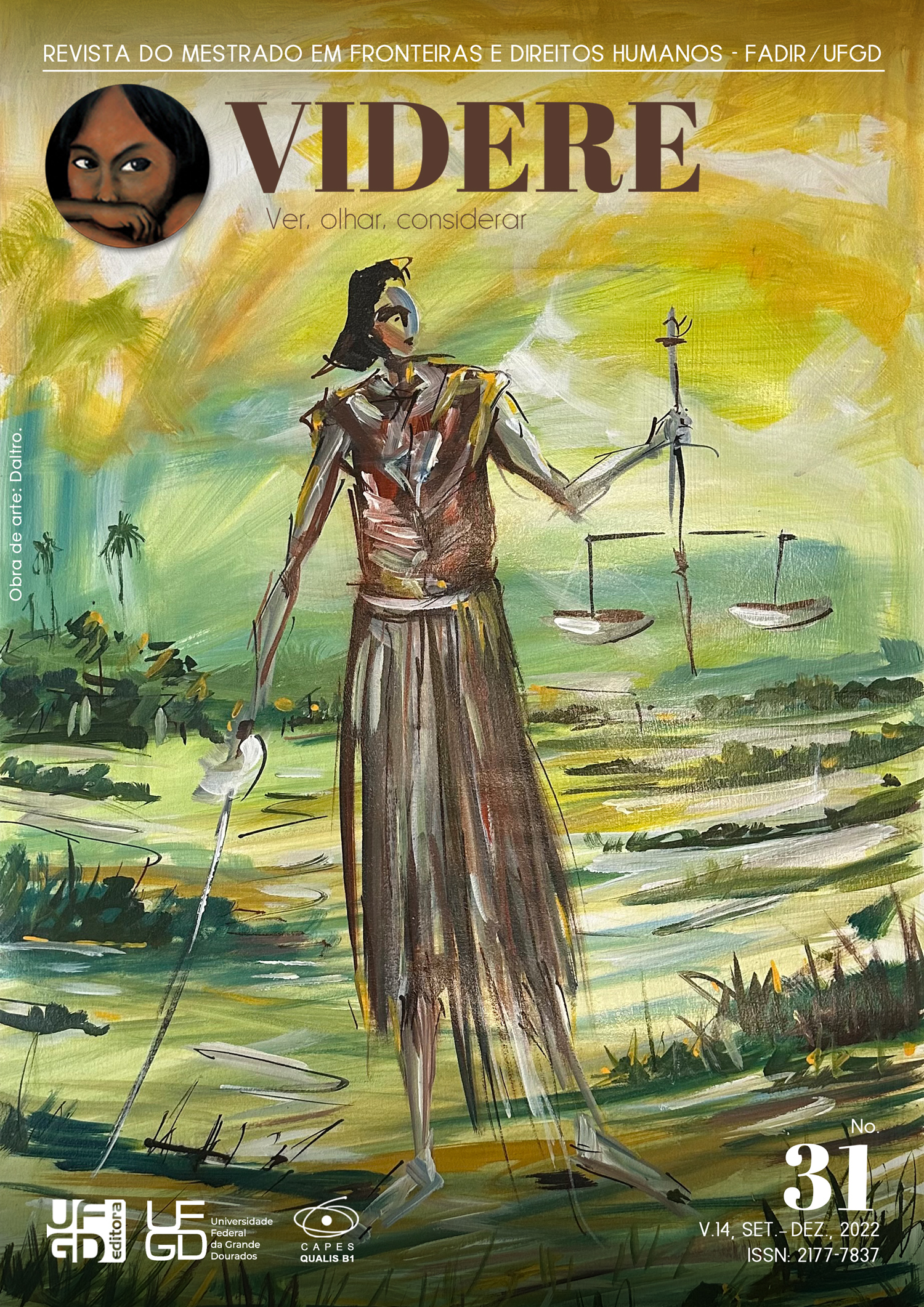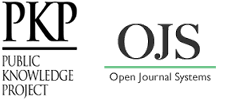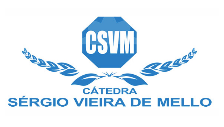Fashion Law and fashion sustainability: a study on climate change, textile fiber production and circular economy
DOI:
https://doi.org/10.30612/videre.v14i31.16285Keywords:
global warming; agrochemicals; sustainable fashion; circular economy; sustainable development.Abstract
The fashion industry, with its linear form of production and consumption, based on extraction and disposal, is responsible for a considerable amount of greenhouse gas emissions that contribute to the global warming and climate changes. Therefore, the relevance of studying this theme and the need to seek sustainable alternatives in order to guarantee the continuity of the human species on this planet is clear. Given the urgency of transition from the current production and consumption model to a more sustainable one, this research seeks to investigate the negative environmental impacts linked to the production chain of the fashion industry, focusing on the production of textile fibers, and how this is related to global warming, in order to collect the necessary information to promote actions to combat climate change. Based on this data, this research aims to evaluate how the Brazilian legal system behaves to solve the problems of sustainability in the national production of textile fibers and what are their deficiencies. Finally, in an attempt to shed light on this issue, this work presents recommendations from international organizations to achieve the goals of combating global warming, a proposal for an economic model based on circularity and the actions taken by Sweden to achieve these goals.
Downloads
References
BELTRAMI, M.; KIM, D.; ROLKENS, F. The State of Fashion 2020. 2020.
BOMBARDI, L. M. Geografia do uso de agrotóxicos no Brasil e conexões com a União Europeia. São Paulo: FFLCH - USP, 2017.
BRASIL. Lei no 12.305, de 2 de agosto de 2010. Disponível em: http://www.planalto.gov.br/ccivil_03/_ato2007-2010/2010/lei/l12305.htm. Acesso em: 21 abr. 2021a.
BRASIL. Lei no 7.802, de 11 de julho de 1989. Disponível em: http://www.planalto.gov.br/ccivil_03/leis/l7802.htm. Acesso em: 23 abr. 2021b.
BRASIL. Lei no 9.985, de 18 de julho de 2000. Disponível em: http://www.planalto.gov.br/ccivil_03/leis/l9985.htm. Acesso em: 24 abr. 2021c.
BRASIL. Relatório nacinal de vigilância em saúde de populações expostas a agrotóxicos. Brasília, 2016.
BRASIL; MINISTÉRIO DO MEIO AMBIENTE. Plano nacional de resíduos sólidos. Brasília, 2020.
BRASIL; MINISTÉRIO PÚBLICO FEDERAL. Nota técnica 4a CCR n.o 1, de 03 de maio de 2018. Disponível em: http://www.mpf.mp.br/pgr/documentos/4ccr_notatecnica_pl-6-299-2002_agrotoxico.pdf. Acesso em: 20 abr. 2021.
BRATSPIES, R. M. Sustainability: Can Law Meet the Challenge? Suffolk Transnational Law Review, Boston, v. 34, n. 2, p. 283–316, 2011. DOI: https://doi.org/10.1017/CBO9781107415324.004
BREWER, M. K. Slow Fashion in a Fast Fashion World: Promoting Sustainability and Responsibility. Laws, v. 8, n. 4, p. 1–9, 2019. DOI: https://doi.org/10.3390/laws8040024
BRYDGES, T. Closing the loop on take, make, waste: Investigating circular economy practices in the Swedish fashion industry. Journal of Cleaner Production, v. 293, 2021. Disponível em: https://doi.org/10.1016/j.jclepro.2021.126245
BUCHALSKA, J. Fashion Law: A New Approach. Queen Mary Law Journal, Londres, v. 7, n. Special Conference Issue, p. 13–26, 2016.
COELHO, S. de O. P.; ARAÚJO, A. F. G. de. A sustentabilidade como princípio constitucional sistêmico e sua relevância na efetivação interdisciplinar da ordem constitucional econômica e social: para além do ambientalismo e do desenvolvimentismo. Revista da Faculdade de Direito da Universidade Federal de Uberlândia, Uberlândia, v. 39, n. 1, p. 261–291, 2011.
FIGUERES, C.; RIVETT-CARNAC, T. What the world will look like in 2050 if we don’t cut carbon emissions in half. Disponível em: https://time.com/5824295/climate-change-future-possibilities/. Acesso em: 28 abr. 2021.
FRINGS, G. S. Moda: do conceito ao consumidor. 9. ed.ed. Porto Alegre: Bookman, 2012. E-book.
GLOBAL FOOTPRINT NETWORK. Ecological Footprint. Disponível em: https://www.footprintnetwork.org/our-work/ecological-footprint/#worldfootprint. Acesso em: 13 maio 2021.
GRIGORI, P. Bancada ruralista retoma PL do Veneno e vê “oportunidade de resolver isso de uma vez”. Disponível em: https://reporterbrasil.org.br/2021/03/bancada-ruralista-retoma-pl-do-veneno-e-ve-oportunidade-de-resolver-isso-de-uma-vez/. Acesso em: 23 abr. 2021.
GWOZDZ, W.; NIELSEN, K. S.; MÜLLER, T. An environmental perspective on clothing consumption: Consumer segments and their behavioral patterns. Sustainability (Switzerland), v. 9, n. 5, 2017.
JIMENEZ, G. C. A Survey of Fashion Law: Key Issues and Trends. In: JIMENEZ, G. C.; KOLSUN, B. (org.). Fashion Law: A Guide for Designers, Fashion Executives, and Attorneys. London: Fairchild Publications, 2014. p. 1–24.
LEHMANN, M.; ARICI, G.; MARTINEZ-PARDO, C. Pulse of the fashion - 2019 update. 2019.
MARINS, C. Pesquisadora relata intimidações por estudo com agrotóxicos e sairá do país. Disponível em: https://noticias.uol.com.br/meio-ambiente/ultimas-noticias/redacao/2021/03/23/carta-pesquisadora-usp-agrotoxicos-brasil.htm. Acesso em: 24 abr. 2021.
MODEFICA; FGVCES; REGENERATE. Fios da Moda: Perspectiva Sistêmica Para Circularidade. São Paulo, 2020.
MORI, L. Por que o futuro do agronegócio depende da preservação do meio ambiente no Brasil. Disponível em: https://www.bbc.com/portuguese/brasil-48875534 Acesso em: 16 abr. 2021.
ORGANIZAÇÃO DAS NAÇÕES UNIDAS. Acordo de Paris. 2015.
ORGANIZAÇÃO DAS NAÇÕES UNIDAS. Objetivo de Desenvolvimento Sustentável 8. Disponível em: https://brasil.un.org/pt-br/sdgs/8. Acesso em: 26 abr. 2021d.
ORGANIZAÇÃO DAS NAÇÕES UNIDAS. Objetivo de Desenvolvimento Sustentável 12. Disponível em: https://brasil.un.org/pt-br/sdgs/12. Acesso em: 26 abr. 2021b.
ORGANIZAÇÃO DAS NAÇÕES UNIDAS. Objetivo de Desenvolvimento Sustentável 13. Disponível em: https://brasil.un.org/pt-br/sdgs/13. Acesso em: 26 abr. 2021c.
ORGANIZAÇÃO DAS NAÇÕES UNIDAS. The Sustainable Development Goals Report 2020: Design for Global Challenges and Goals. 2021. DOI: https://doi.org/10.4324/9781003099680-3.
ORGANIZAÇÃO DAS NAÇÕES UNIDAS. Transforming our world: the 2030 agenda for sustainable development. United Nations, 2015. DOI: https://doi.org/10.1201/b20466-7.
PAY UP FASHION. The problem. Disponível em: https://payupfashion.com/the-problem/. Acesso em: 27 abr. 2021.
PINTO, E. D. P. P.; MOUTINHO, P.; RODRIGUES, L. Perguntas e respostas sobre aquecimento global. Belém: IPAM, 2010.
REFOSCO, E.; OENNING, J.; NEVES, M. Da Alta Costura ao Prêt-à-porter, da Fast Fashion a Slow Fashion: um grande desafio para a Moda. ModaPalavra e-periódico, Florianópolis, v. 4, n. 8, 2011.
REUTERS. França ajudará agricultores a abandonar herbicida glifosato. Disponível em: https://g1.globo.com/economia/agronegocios/noticia/2020/12/07/franca-ajudara-agricultores-a-abandonar-herbicida-glifosato.ghtml. Acesso em: 24 abr. 2021.
ROOS, S. et al. A life cycle assessment (LCA)-based approach to guiding an industry sector towards sustainability: the case of the Swedish apparel sector. Journal of Cleaner Production, v. 133, p. 691–700, 2016. DOI: https://doi.org/10.1016/j.jclepro.2016.05.146
ROYAL SWEDISH ACADEMY OF ENGINEERING SCIENCES. Textiles – from waste to resource by 2030. 2020.
SANDIN, G. et al. Environmental assessment of Swedish clothing consumption - six garments, sustainable futures. Gotemburgo, 2019.
SANDIN, G.; ROSS, S.; JOHANSSON, M. Environmental impact of textile fibers – what we know and what we don’t know. Gotemburgo, 2019.
SHEPHERD, J. et al. A New Textiles Economy: Redesigning Fashion’s FutureEllen MacArthur Foundation. 2017.
SHIVA, V. Earth Democracy: Sustainability, Justice, and Peace. Buffalo Environmental Law Journal, Búfalo, v. 26, p. 1–14, 2018.
SOUTO, L. Moda escrava: mulheres são maioria em trabalho indigno na área têxtil em SP. Disponível em: https://www.uol.com.br/universa/noticias/redacao/2020/08/29/moda-escrava-setor-textil-e-o-que-mais-recruta-mulheres-em-sao-paulo.htm. Acesso em: 27 abr. 2021.
SVENDSEN, L. Moda: Uma Filosofia. Rio de Janeiro: Zahar, 2010.
STICA. 2021 Progress Report a New Standard. 2021.
TAX in fashion - to get rid of harmful chemicals. Disponível em: https://www.gu.se/en/news/tax-in-fashion-to-get-rid-of-harmful-chemicals. Acesso em: 30 abr. 2021.
TARAHITA, D.; RAKHMAT, M. Z. Indonesia’s Citarum: the world’s most polluted river. 2018. Disponível em: https://thediplomat.com/2018/04/indonesias-citarum-the-worlds-most-polluted-river/ Acesso em: 15 abr. 2021.
THE ECONOMIST. The true cost of fast fashion. 2018. (6m50s). Disponível em: https://www.youtube.com/watch?v=tLfNUD0-8ts. Acesso em: 13 abr. 2021.
THE FASHION PACT. First Steps to Transform Our Industry. 2020.
THE TIMES EDITORIAL BOARD. Wealthy countries are responsible for climate change, but it’s the poor who will suffer most. Disponível em: https://www.latimes.com/opinion/editorials/la-ed-climate-change-global-warming-part-2-story.html. Acesso em: 28 abr. 2021.
THORISDOTTIR, T. S.; JOHANNSDOTTIR, L. Corporate social responsibility influencing sustainability within the fashion industry. A systematic review. Sustainability (Switzerland), v. 12, n. 21, p. 1–64, 2020. DOI: https://doi.org/10.3390/su12219167
TURKER, D.; ALTUNTAS, C. Sustainable supply chain management in the fast fashion industry: An analysis of corporate reports. European Management Journal, v. 32, n. 5, p. 837–849, 2014.
UN Alliance for Sustainable Fashion. Disponível em: https://unfashionalliance.org/. Acesso em: 28 abr. 2021.
UNEP. Monitoring the shift to sustainable consumption and roduction patterns in the context of the SDGs. 2016.
UNFCCC. Fashion industry charter for climate action. 2018.
UNFCCC. Participants in the Fashion Industry Charter for Climate Action. Disponível em: https://unfccc.int/climate-action/sectoral-engagement/global-climate-action-in-fashion/fashion-industry-charter-for-climate-action/participants-in-the-fashion-industry-charter-for-climate-action. Acesso em: 29 abr. 2021.
UNIVERSIDADE DE GOTEMBURGO. The Swedish government moves foward with implementing a tax on chemicals in clothing and footwear. Disponível em: https://www.gu.se/en/news/the-swedish-government-moves-forward-with-implementing-a-tax-on-chemicals-in-clothing-and-footwear. Acesso em: 30 abr. 2021.
Downloads
Published
How to Cite
Issue
Section
License
Copyright (c) 2023 Revista Videre

This work is licensed under a Creative Commons Attribution-NonCommercial-ShareAlike 3.0 Unported License.
Authors must accept the publication rules when submitting the journal, as well as agree to the following terms:
(a) The Editorial Board reserves the right to make changes to the Portuguese language in the originals to maintain the cultured standard of the language, while respecting the style of the authors.
(b) Authors retain the copyright and grant the journal the right to first publication, with the work simultaneously licensed under the Attribution-NonCommercial-ShareAlike 3.0 Brazil (CC BY-NC-SA 3.0 BR) that allows: Share - copy and redistribute the material in any medium or format and Adapt - remix, transform, and create from the material. CC BY-NC-SA 3.0 BR considers the following terms:
- Attribution - You must give the appropriate credit, provide a link to the license and indicate whether changes have been made. You must do so under any reasonable circumstances, but in no way that would suggest that the licensor supports you or your use.
- NonCommercial - You may not use the material for commercial purposes.
- Sharing - If you remix, transform, or create from material, you must distribute your contributions under the same license as the original.
- No additional restrictions - You may not apply legal terms or technological measures that legally restrict others from doing anything that the license permits.
(c) After publication, authors are allowed and encouraged to publish and distribute their work online - in institutional repositories, personal page, social network or other scientific dissemination sites, as long as the publication is not for commercial purposes.



















